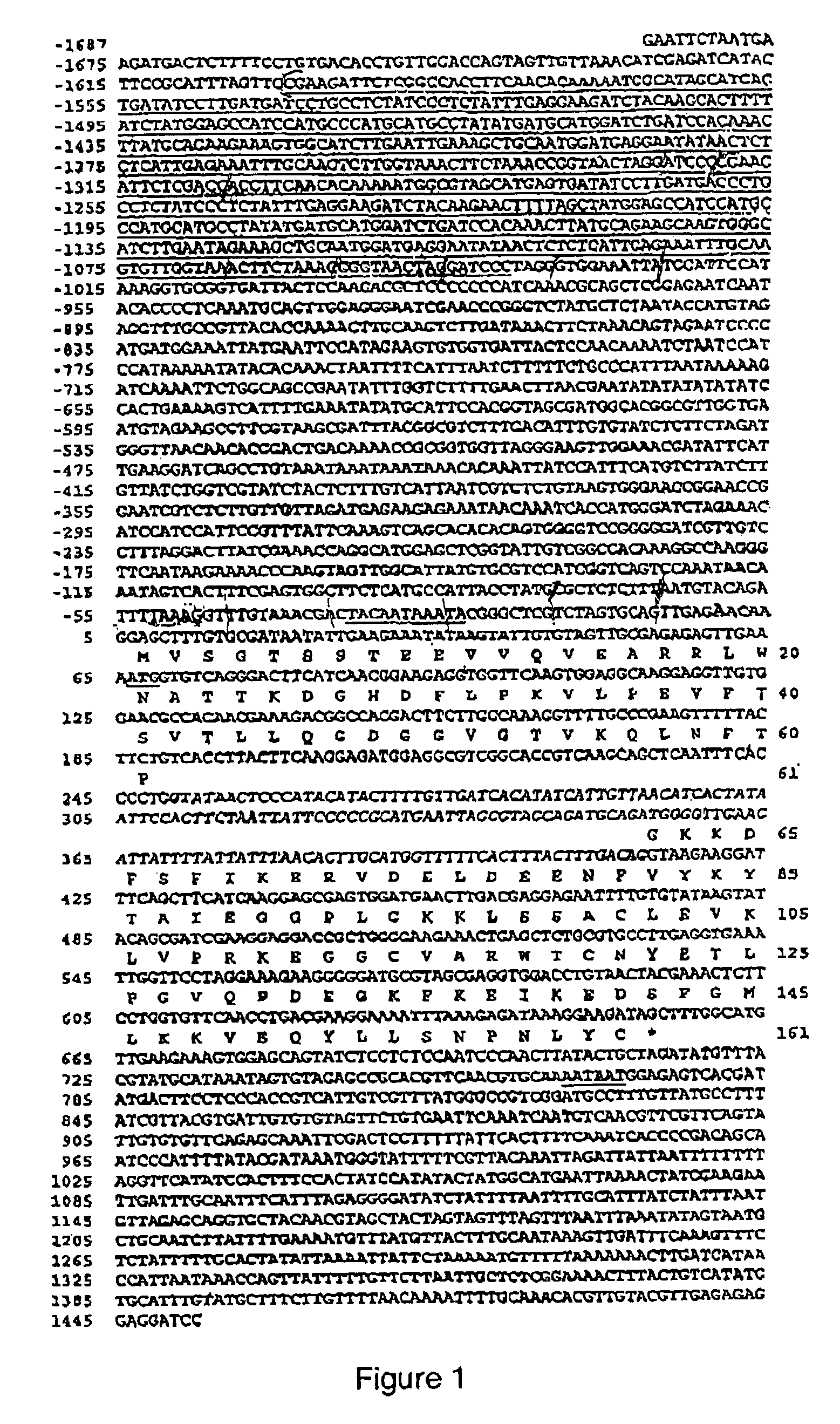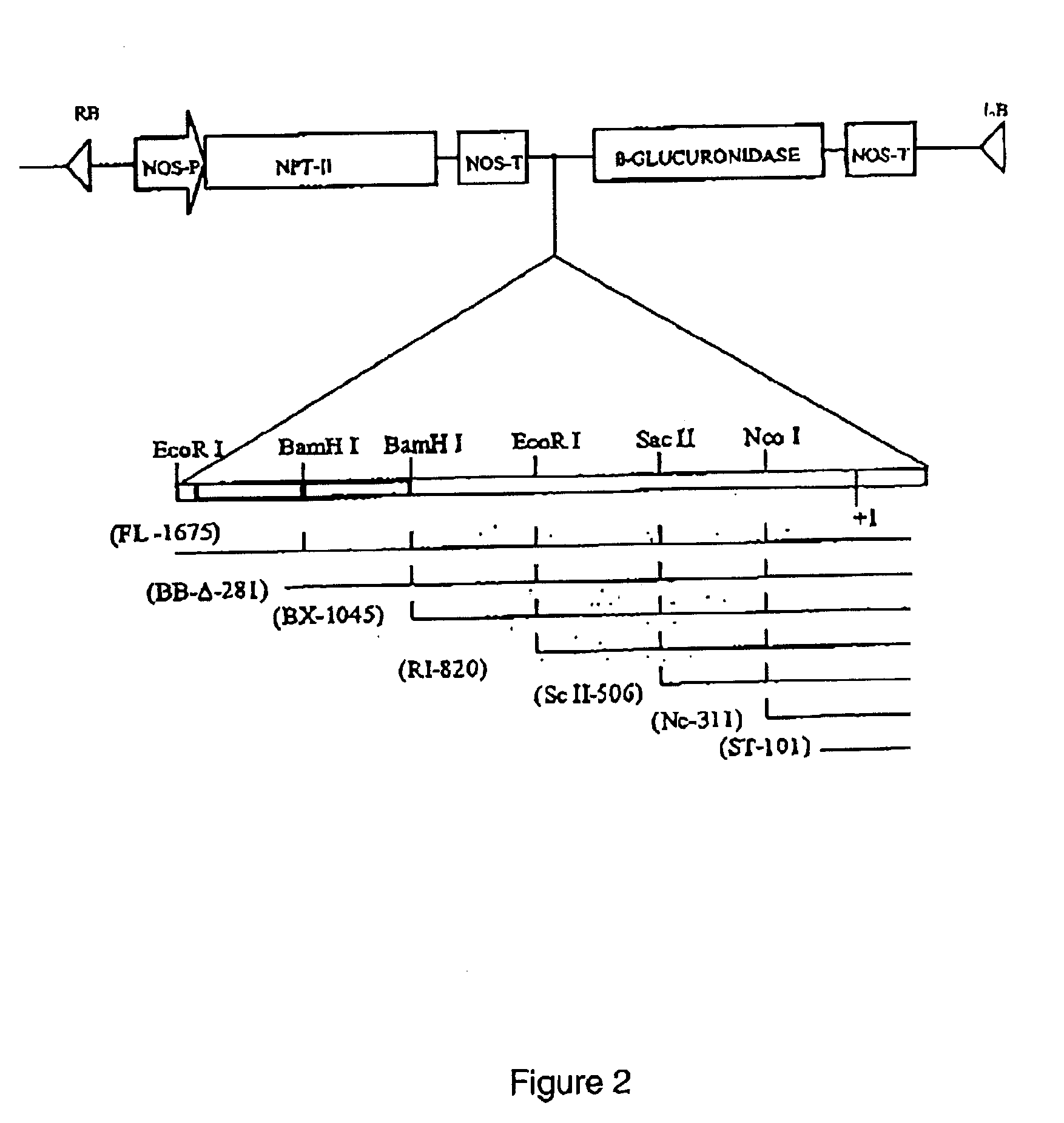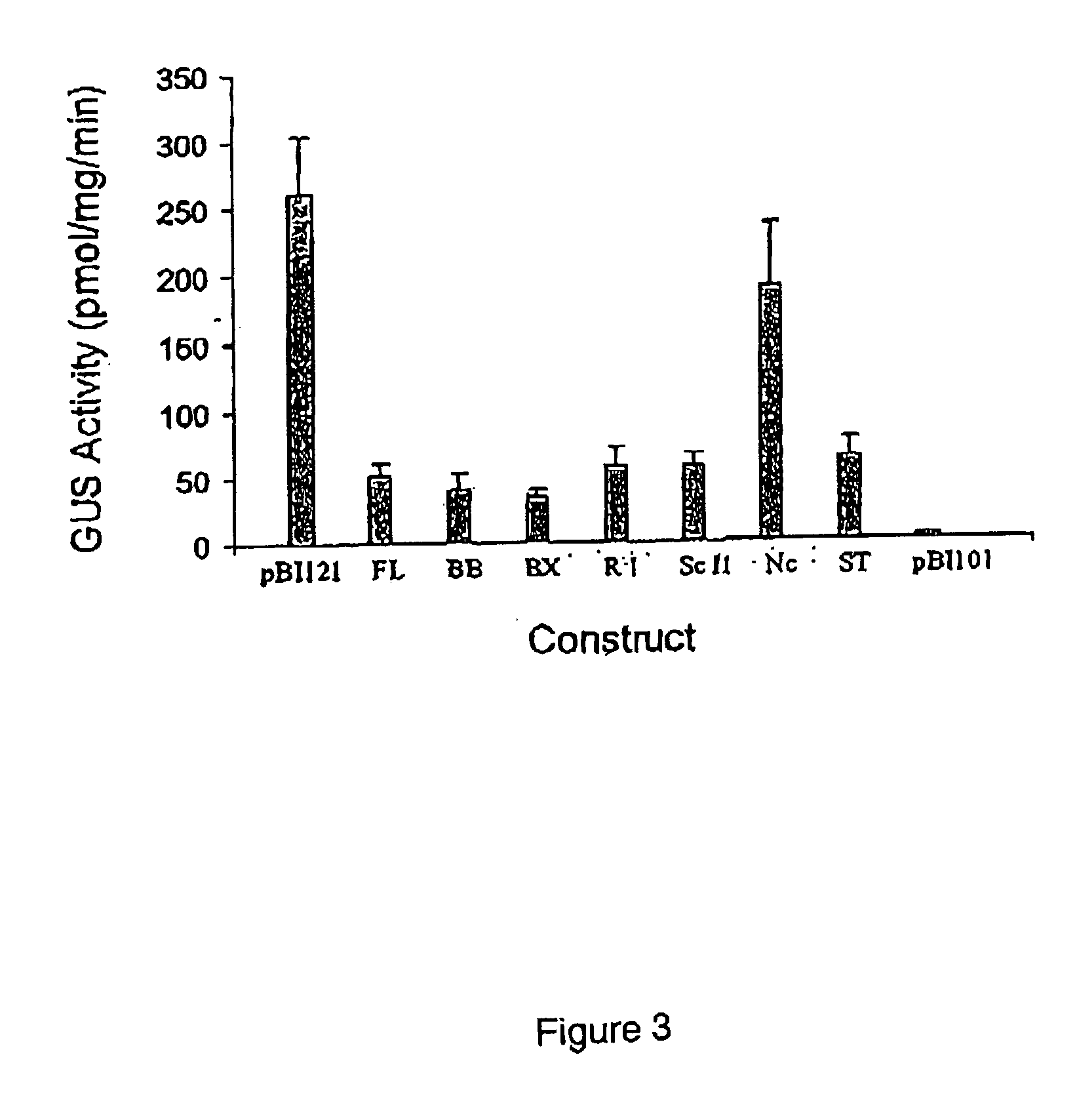Root-specific conifer gene promoter and its use
a conifer gene and promoter technology, applied in the field of root-specific conifer gene promoters, can solve the problems of negative effects on plant growth and reproduction, limited understanding of root gene expression regulation, etc., and achieve the effect of reducing the expression of a downstream gen
- Summary
- Abstract
- Description
- Claims
- Application Information
AI Technical Summary
Benefits of technology
Problems solved by technology
Method used
Image
Examples
example 1
Plant Materials
[0073]Seedlings of western white pine (Punus monticola Dougl. Ex D.Don) were grown under natural conditions in the green house, or in the growth chamber maintained for a 16-h day (24° C.) and an 8-h night (20° C.) under light illumination (2000 lux). The developing male cones and female cones were collected from mature trees in May 2000 at Pacific Forestry Centre, Victoria, BC, Canada. Tobacco plants (Nicotiana tabacum cv. ws38) were grown in growth chambers for agoinfiltration and gene transformation.
example 2
PR10 Gene Cloning and PCR Amplification
[0074]Genomic DNA was isolated from needles of current year of western white pine using a DNA easy kit (Qeagene). A two-step PCR strategy was used for the genomic DNA cloning of PR10 genes in western white pine. First, the inverse polymerase chain reaction (IPCR) was performed to clone the flanking sequences of coding region. The reverse primer GSP1 (5′-CCT TGC CTC CAC TTG AAC CAC CTC TTC CG-3′ SEQ.ID.NO.8) and forward primer 3SE1 (5′-C CTC TCC AAT CCC AAC TTA TAC TG-3′ SEQ.ID.NO.9) used in IPCR hybridize to the sense and antisense strands of the PR 10 cDNA of Pin m III (Yu etal., 2000), respectively. Second, a pair of primers were designed based on the flanking sequences obtained above to perform long distance PCR to clone the whole PR10 gene, including promoter region, coding region and down stream region after stop codon. The primers used in long distance PCR for the genomic DNA cloning of full-length PR10 gene were forward primer B43-5′ (5′...
example 3
RNA Isolation and Analysis
[0075]Total RNA was isolated according to the method of Liu et al. (1998) with some modifications. Briefly, total RNA was extracted from western white pine tissues after treatments. Each sample (˜0.5 to 1.0 g) was ground to a fine powder in liquid nitrogen, then homogenized in 10 mL of extraction buffer (0.1 M Tris-HCl, pH7.4, 50 mM EDTA, 0.5 M NaCl, 2% SDS, 2% PVP, and 10 mM β-mercaptoethanol). The mixture was incubated for 20 min at 65° C. Cellular debris was removed by centrifugation of 12,000 g for 15 min at room temperature. To the supernatant, 3.3 mL of 5 M Kac (pH5.5) was added. The mixture was incubated on ice for 30 min, then centrifuged at 12,000 g for 10 min at 4° C. After phenol / chloroform extraction, the RNA was precipitated from supernatant by adding ⅓ volume of 8 M LiCl and incubating overnight at 4° C. The RNA was recovered by centrifugation at 12,000 g for 30 min, and washed with 2 M LiCl and 70% ethanol. The air-dried RNA precipitate was r...
PUM
| Property | Measurement | Unit |
|---|---|---|
| PDI | aaaaa | aaaaa |
| PDI software | aaaaa | aaaaa |
| volume | aaaaa | aaaaa |
Abstract
Description
Claims
Application Information
 Login to View More
Login to View More - R&D
- Intellectual Property
- Life Sciences
- Materials
- Tech Scout
- Unparalleled Data Quality
- Higher Quality Content
- 60% Fewer Hallucinations
Browse by: Latest US Patents, China's latest patents, Technical Efficacy Thesaurus, Application Domain, Technology Topic, Popular Technical Reports.
© 2025 PatSnap. All rights reserved.Legal|Privacy policy|Modern Slavery Act Transparency Statement|Sitemap|About US| Contact US: help@patsnap.com



